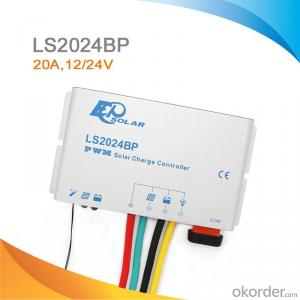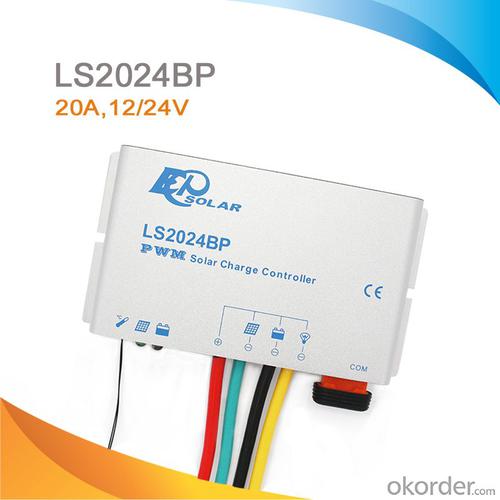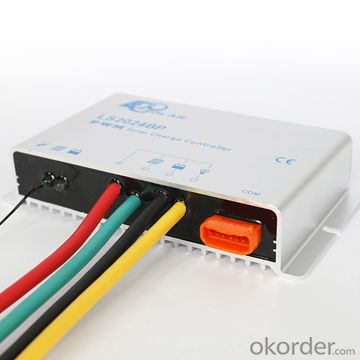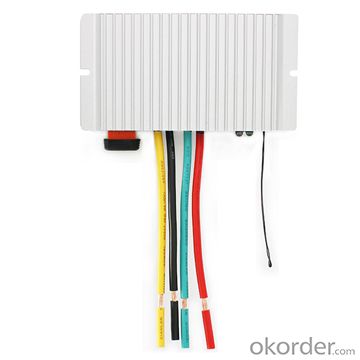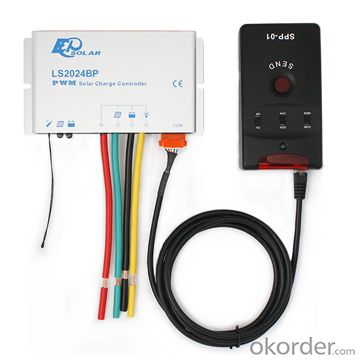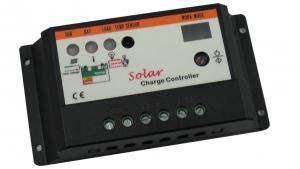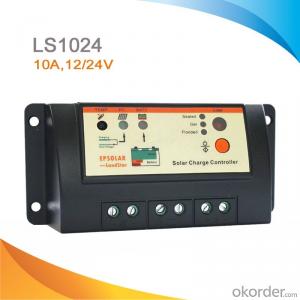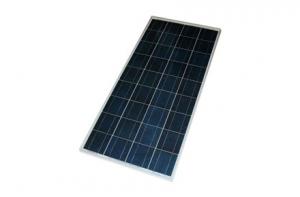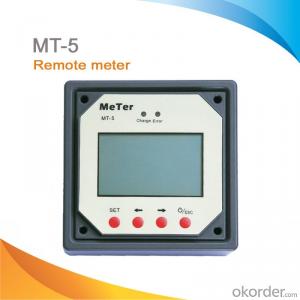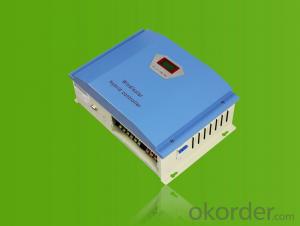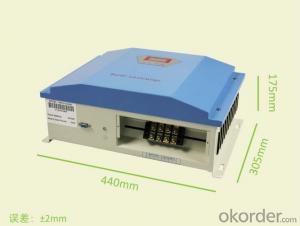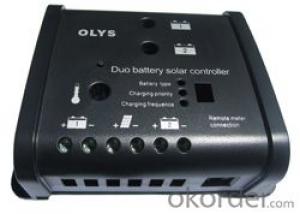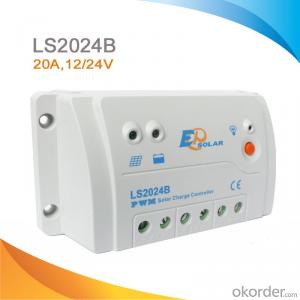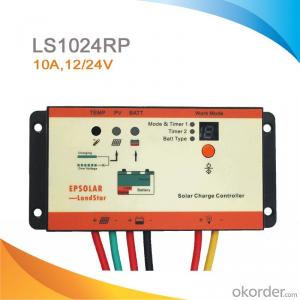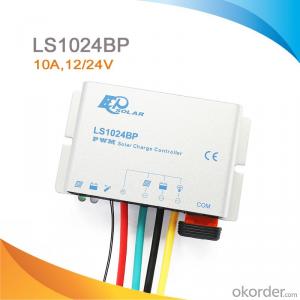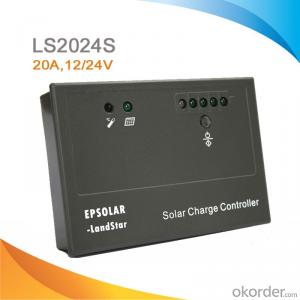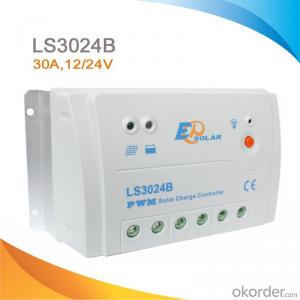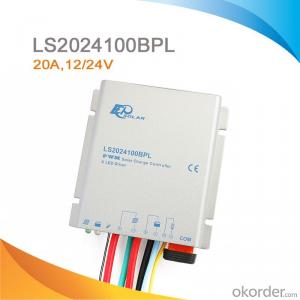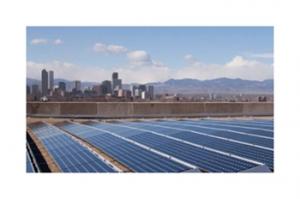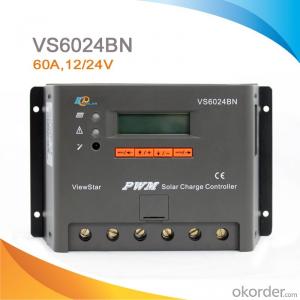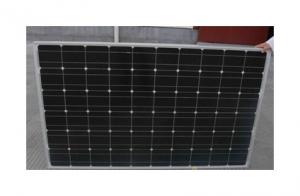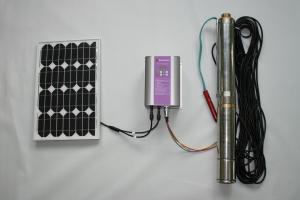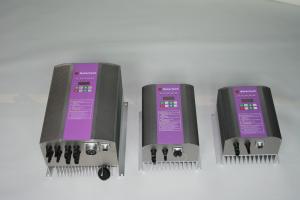Solar Controllers Rv Waterproof PWM Solar Charge Controller 20A, 12/24V, LS2024BP
- Loading Port:
- China main port
- Payment Terms:
- TT or LC
- Min Order Qty:
- -
- Supply Capability:
- -
OKorder Service Pledge
OKorder Financial Service
You Might Also Like
Features:
·12V/24V automatic identify or user-defined working voltage.
·High efficient Series PWM charging, increase the battery lifetime and improve the solar system performance.
·Use MOSFET as electronic switch, without any mechanical switch.
·Multiple load control modes, increase the flexibility of the load output
·Gel, Sealed, Flooded and user-defined battery type option.
·New SOC method of calculating accurately displays the available battery capacity.
·LandStar BP has no keys , The control function and the switch condition of the load can be modified by communication connection.
·Use of standard Modbus communication protocol for TTL-232 bus connections, communication protocol compatibility much better
·Support firmware upgrade
·Fully encapsulated PCB, IP67 protection
·Aluminumhousing
More powerful function via MT50 or PC
·Diversified load control modes : Manual, Light ON/OFF, Light ON+ Timer, Time Control
·Battery type selection: Gel, sealed, flooded and User type
·Real-time monitor
·Programmable parameters
·LVD or SOC load disconnect function
·Energy statistics function
Electronic Protections:
·PV array short circuit
·Over discharging
·Over charging
·Load overload
·Load short circuit
·PV reverse polarity
·Battery reverse polarity
·Overheating
Specification:
Electrical parameters | LS1024BP | LS2024BP |
Nominal System Voltage | 12 / 24V auto work | |
Rated Battery Current | 10A | 20A |
Maximum battery voltage | 34V | |
Grounding | Common positive | |
Self-consumption | 8.4mA(12V),7.8mA(24V) | |
Temp. compensation | -3mV/℃/2V(25℃ ref) | |
Equalize charging voltage | Sealed: 14.6V, Flooded: 14.8V, User-defined: 9~17V | |
Boost charging voltage | Gel: 14.2V, Sealed: 14.4V, Flooded: 14.6V, User-defined: 9~17V | |
Float charging voltage | Gel /Sealed /Flooded: 13.8V, User-defined: 9~17V | |
Low voltage reconnect voltage | Gel /Sealed /Flooded: 12.6V, User-defined: 9~17V | |
Low voltage disconnect voltage | Gel /Sealed /Flooded: 11.1V, User-defined: 9~17V | |
Working temp. | -35℃~+55℃ | |
Humidity | ≤95% (NC) | |
Enclosure | IP67 | |
Dimension | 108.5 x 64.5 x 25.6mm | 139 x 76.5 x 28mm |
Terminal | 4mm2 | 6mm2 |
Net weight | 0.4kg | 0.6kg |
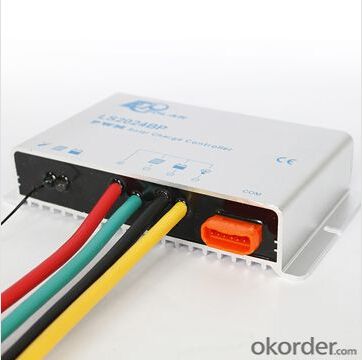
FAQ:
Q1. What is the voltage?
A1. Our 45/60A solar charge controller is 12/24/36/48V auto work.
Q2. What is the difference between MPPT&PWM?
A2. MPPT has higher efficiency, it can track the max power point and won't waste energy.
Q3. What is the efficiency of the MPPT controller?
A3. MPPT>99%, peak conversion efficiency>98%.
Q4. What is the waranty of product?
A4. 12 months.
Q5. What protection does your MPPT controller have?
A5. PV array short circuit, PV reverse polarity, Battery reverse polarity, Over charging, Output short circuit.
- Q: What are the main components of a solar controller?
- The main components of a solar controller typically include a charge controller, which regulates the flow of electricity between the solar panel and the battery, ensuring the battery is not overcharged or damaged. Additionally, a solar controller may also have a load controller, which manages the flow of electricity from the battery to the connected load, such as lights or appliances. Some advanced solar controllers may also include features like LCD screens, voltage regulators, temperature sensors, and communication ports.
- Q: What is the equalization charging mode of a solar controller?
- The equalization charging mode of a solar controller is a process where the controller intentionally overcharges the batteries to balance the voltage levels of individual battery cells. This helps to prevent stratification, a condition where certain cells in the battery pack have a higher voltage than others, which can lead to reduced battery capacity and lifespan. By equalizing the charge across all cells, the controller ensures optimal performance and longevity of the batteries.
- Q: Can a solar controller be used in off-grid systems?
- Yes, a solar controller can be used in off-grid systems. In fact, it is an essential component of off-grid solar systems as it regulates the flow of electricity from the solar panels to the batteries. The solar controller ensures that the batteries are charged efficiently while preventing overcharging or damage to the batteries.
- Q: How do I prevent short-circuiting with a solar controller?
- To prevent short-circuiting with a solar controller, there are a few important steps you can take: 1. Proper wiring: Ensure that all wiring connections are securely tightened and properly insulated. Loose or exposed wires can increase the risk of short-circuiting. Use high-quality cables and connectors that are rated for the current and voltage of your solar system. 2. Fuse or breaker protection: Install appropriate fuses or circuit breakers in the positive and negative connections between the solar panels, controller, and battery bank. These protective devices will automatically disconnect the circuit in case of a short-circuit, preventing any damage to the controller or other components. 3. Regular maintenance: Inspect your solar system regularly for any signs of wear, damage, or loose connections. Clean the panels to ensure maximum efficiency and remove any debris that could potentially cause a short-circuit. 4. Proper grounding: Ensure that your solar system is properly grounded. This involves connecting the negative terminal of the battery bank to a grounding rod. Grounding helps to dissipate any stray electrical charges and reduces the risk of short-circuiting. 5. Use an appropriate solar controller: Make sure you select a solar controller that is suitable for your specific solar system configuration and its maximum current and voltage requirements. Oversized or undersized controllers can increase the risk of short-circuiting. 6. Follow manufacturer guidelines: Always consult the manufacturer's instructions and guidelines for your specific solar controller. They often provide specific recommendations and precautions to prevent short-circuiting and ensure the safe operation of your solar system. By following these preventive measures, you can greatly reduce the potential for short-circuiting in your solar controller and ensure the efficient and safe functioning of your solar power system.
- Q: Can a solar controller be used with solar panel ground screws?
- Yes, a solar controller can be used with solar panel ground screws. The solar controller is responsible for regulating the charging and discharging of the battery connected to the solar panel system. The ground screws, on the other hand, provide stability and support to the solar panels by firmly anchoring them to the ground. These two components serve different functions and can be used together to ensure the efficient operation of the solar panel system.
- Q: How does a solar controller prevent battery discharge during nighttime?
- A solar controller prevents battery discharge during nighttime by automatically detecting when there is no solar energy being generated and disconnecting the battery from the solar panel. This prevents any power from being drained from the battery and ensures its stored energy is preserved for use during the night.
- Q: Can a solar controller be used with a solar-powered air conditioner?
- Yes, a solar controller can be used with a solar-powered air conditioner. A solar controller is responsible for regulating the charging and discharging of batteries in a solar power system, while a solar-powered air conditioner uses energy generated from solar panels to operate. By integrating a solar controller, one can effectively manage and optimize the energy flow from the solar panels to power the air conditioner, ensuring efficient and sustainable operation.
- Q: How does a solar controller handle voltage fluctuations from the solar panels?
- A solar controller, also known as a charge controller, is utilized in solar power systems to regulate and control the electricity flow between the solar panels and the battery bank. One of its primary functions is to manage voltage fluctuations originating from the solar panels. When sunlight strikes the panels, it generates direct current (DC) electricity. However, the voltage output of the panels can vary due to factors like sunlight intensity, temperature, and shading. These fluctuations in voltage can be detrimental to the battery bank as they have the potential to either overcharge or undercharge the batteries, leading to reduced performance and lifespan. In order to address voltage fluctuations, a solar controller incorporates a technique called Maximum Power Point Tracking (MPPT). MPPT is a technology that ensures the panels operate at their maximum power output, regardless of voltage fluctuations. The solar controller continually monitors the voltage and current produced by the solar panels and tracks the optimal operating point, where the panels generate the most power. By consistently adjusting the electrical load on the panels, the MPPT algorithm guarantees that the panels operate at their maximum power output, even in the presence of voltage fluctuations. To accomplish this, the solar controller dynamically adjusts the resistance across the panels, thereby optimizing the voltage and current levels. This enables the solar panels to consistently supply a stable and optimal voltage to the battery bank, irrespective of any environmental fluctuations. Additionally, solar controllers incorporate several protective features alongside MPPT to handle voltage fluctuations. These features include overcharge protection, which prevents the batteries from becoming overcharged when the panels produce excessive voltage, and over-discharge protection, which prevents the batteries from being excessively discharged when the panels produce insufficient voltage. Overall, a solar controller plays a vital role in managing voltage fluctuations originating from the solar panels. By utilizing MPPT technology and incorporating protective features, it ensures that the solar power system operates efficiently, maximizing the power output from the panels while safeguarding the battery bank from damage caused by voltage fluctuations.
- Q: How does a solar controller handle different battery chemistries?
- A solar controller handles different battery chemistries by adjusting its charging algorithm and voltage set points to match the specific requirements of each battery type. It monitors the state of charge and temperature of the battery to optimize the charging process and prevent overcharging or undercharging, ensuring the longevity and performance of the battery regardless of its chemistry.
- Q: Can a solar controller be used with both 12V and 24V systems?
- Yes, a solar controller can be used with both 12V and 24V systems. Most modern solar controllers are designed to be compatible with multiple voltage systems and have the ability to automatically adjust their settings based on the voltage of the system they are connected to.
Send your message to us
Solar Controllers Rv Waterproof PWM Solar Charge Controller 20A, 12/24V, LS2024BP
- Loading Port:
- China main port
- Payment Terms:
- TT or LC
- Min Order Qty:
- -
- Supply Capability:
- -
OKorder Service Pledge
OKorder Financial Service
Similar products
Hot products
Hot Searches
Related keywords
